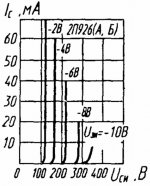Member
Joined 2009
Paid Member
Any new hints on possible future availability of parts for us to play with ?
I was reminded of this when I was re-reading the nemesis article again today
"Also I have reason to believe that we will see some new SIT parts from a couple of sources in the coming year – parts that you should be able to actually buy.
You should probably start saving for them now... © 2011 Nelson Pass"🙂
- if this is one of those 'annoying' questions that gets asked every few days please delete my thread !!
I was reminded of this when I was re-reading the nemesis article again today
"Also I have reason to believe that we will see some new SIT parts from a couple of sources in the coming year – parts that you should be able to actually buy.
You should probably start saving for them now... © 2011 Nelson Pass"🙂
- if this is one of those 'annoying' questions that gets asked every few days please delete my thread !!
Last edited:
Member
Joined 2009
Paid Member
Thanks for that - it's a fun thread to read.
It offers high input impedance, better than a naked PASS SIT, albeit with extra parts.
It offers high input impedance, better than a naked PASS SIT, albeit with extra parts.
Russian KP926 high-voltage SITs are available still. Unlike Nelson's new SITs, that are better suited for genuine SS designs, the KP926 try to "fake" tube output curves, and could be used in genuine tube schematics.
I enclose the Id(mA) vs Vds(V) curves from datasheet, at various Vgs(V) negative bias voltages. Quite triode-like tubie picture.
I enclose the Id(mA) vs Vds(V) curves from datasheet, at various Vgs(V) negative bias voltages. Quite triode-like tubie picture.
Attachments
Last edited:
These would need an output transformer ? Where does one buy these ?
Yes, an output transformer seems necessary, but I doubt that the resulting sound would be as good as with tubes. At the same time, there could be some positive features, like no cathode current, no life-time limitation, better output impedance and amp-speaker interaction.
They are sourced from russian sellers, but indirectly, via some person-intermediant, since sellers can not export directly.
Member
Joined 2009
Paid Member
I'd like to get my hands on some SITs myself for tinkering purposes, though I'll continue "faking it" as well.
someone is going to split with friend - 100 pcs of КП903А , as soon his mother in law bring them form Russia
MiL is greatest kin
MiL is greatest kin

Vladimirk, I prefer KP801G, do you know of a source for these ?
I did not use KP801 still, and not sure I would like to have troubles with getting them.
I have tested KP903 and KP926, and made some conclusions. I believe, 926 would be very useful, if one needs an amp with output trafo, but much more reliable than tube amp. This can be a case of professional equipment.
SITs and jFETs are very good at output stage, if one supposes using an amp with them at tube system, with "light" speakers. These parts are fast, have rather high "effective" Ft, like latFETs and MOSFETs also. With SITs and jFETs one has less probability that GNFB operation will be listenable (compared to BJTs). But,
1) Ciss of SITs is rather big and non-linear, compared to tubes. I would prefer paralleled KP903 instead of KP801 or KP926, total Ciss of paralleled 903 is an order of magnitude smaller. I have played with 8pcs 903 in parallel.
2) with SITs, one will never approach that "punchy" bass that we usually have with power BJTs at the output. This bass feeling is even not a matter of low Zout, more probably it is a consequence of fast changes of crystal properties under current pulse conditions. Here it could be the same story, what we hear is not always justified by simple measurements.
I can understand using of vertical MOSFETs at output, because of their high "effective" Ft compared to standard BJTs, that allows for better GNFB operation. But, difference in specific sound signature between BJTs and MOSFETs is quite listenable, especially with lateral MOSFETs at output.
Now I prefer radio-frequency (Ft around 300MHz) power BJTs at output stage of GNFB schematics. With them, sound is the same "tuby", as with SITs, but much more "punchy" with my PMC EB1i speakers. With standard 30MHz Toshiba's power BJTs, sound is different, some "dust" from GNFB operation is listenable.
I hope, that NoGNFB schematics will be "punchy" enought with Ge power BJTs at output. Now I am completing assembling of NoGNFB prototype with 30MHz Ge power BJTs at output. KP903 are used at input differential stage, operating with 100mA tail current. This one stage acts as both input and driver stages.
Last edited:
- Status
- Not open for further replies.
- Home
- Amplifiers
- Pass Labs
- SIT devices for DIY
